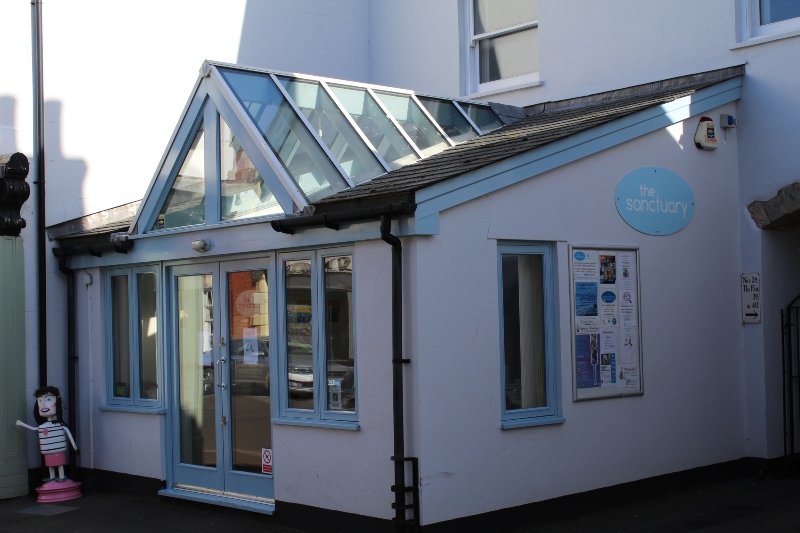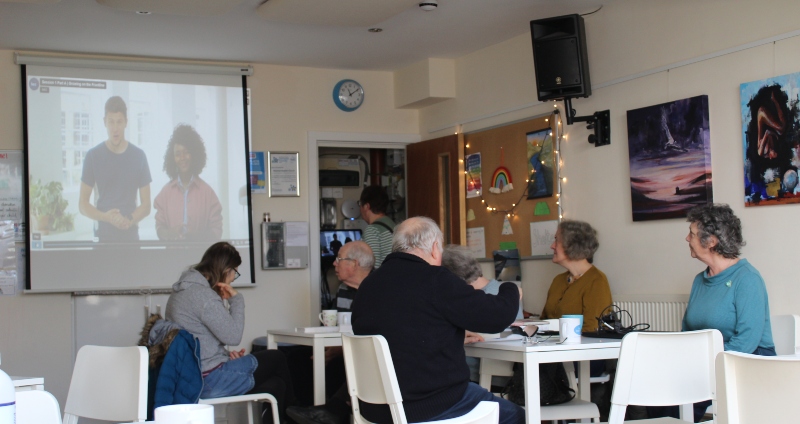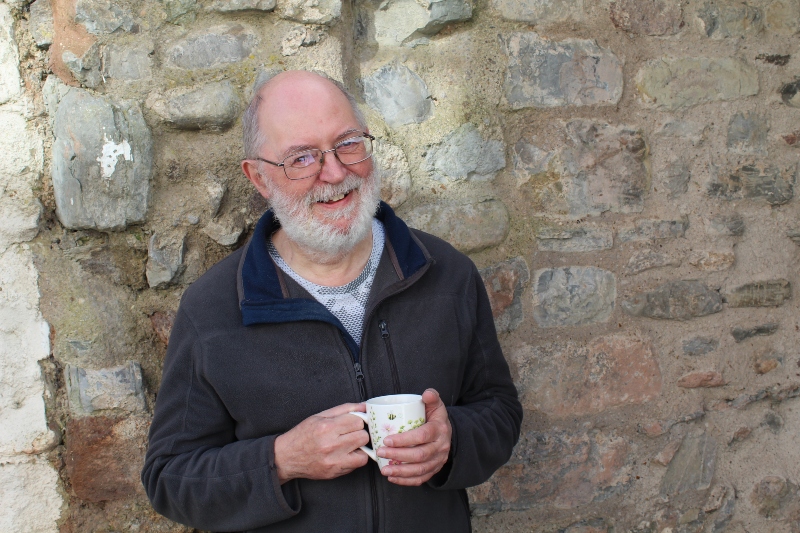Big church, little church
Watchet Baptist Church has been on a journey discovering new ways of being missional disciples of Jesus - and this has included an overhaul of Sundays. Minister Mike Sherburn is joined by several members in reflecting on what’s happened so far

“We’re not the only ones trying something new. It’s come with its challenges but it’s exciting, too.”
Mike Sherburn credits the people of Watchet Baptist Church with the courage and determination to embrace change for this congregation on the West Somerset coast.
“When I got here, mission was already in the church’s DNA,” said Mike, who arrived as Pastor in 2017. “I’ve got my predecessors to thank for that. I was called here with an understanding that the church was looking for discipleship, which I’m passionate about.”
Sometime in 2019, Mike stood behind the hatch in The Sanctuary, the church’s town centre home, wondering again about the space between getting to know people and introducing them to Jesus.

The Sanctuary - Watchet Baptist Church
“Often in church, there’s a sense that mission is outsourced by the church to its pastor or deacons. And the same goes for spiritual or discipleship growth. You can end up feeling like it’s supposed to happen automatically – but it doesn’t. With spiritual growth and with mission, disciples have to own it themselves, do it together and do it on purpose. Jesus told each of us to be and make disciples.”
Working out how to invest in this took time. Not everyone was convinced by an approach that looked at alternatives to altar calls and evangelism courses. There were pictures from the Holy Spirit that were prayerfully considered alongside input from former Baptist Union President Ken Benjamin and from Lynn Green, who spoke at a regional online meeting.
And in the middle of it all, Mike had three months off sick, struggling with depression.
“The team was fantastic – thoroughly supportive and determined to look after me. And despite my vulnerability and learning new limits, they never stopped trusting my leadership and respecting what I bring.”
Then, after months of meeting online and outdoors through the Covid pandemic, came a decision to avoid sliding back into old patterns by default and choose a way forward that matched those priorities of mission and discipleship growth. What followed was a season of weighing up priorities and challenging conversations among deacons.
“We didn’t all see things the same way,” said Mike. “But right from the start, despite different points of view, there was a steady determination to remain united.”
From this came a radical proposal: a 12-month trial of meeting all together twice a month, a renewing of small groups[1] and releasing those groups to use the other Sunday mornings either for mission or for discipleship. That pattern is sometimes called big church/little church and includes weekly teaching sessions on YouTube, which go live at 6pm each Sunday (with much of that material available as podcasts).

Gatherers at The Sanctuary on a Sunday morning
PE teacher Charles said: “It’s totally radical and from the inside, maybe we don’t always appreciate that. I’ve never encountered this before. However, the structure isn’t the most important thing. What matters is that it has Jesus on the tin.”
So, from late January 2022, a year of exploring and experimenting began. One of the small groups has got a little smaller while others have grown. Still, some felt the lost chances to gather all together were too big a step.
Mike said: “For many of us, weekly Sunday morning gathering is an expression of faithfulness and obedience. This trial period asked a lot; it was an emotional experience.”
As the year reached its conclusion, there was an online survey as well as opportunities for prayer and discussion.
“The humility of the deacons was amazing,” said Mike. “When it came down to it, there was a shared commitment to make sure everyone at the church had what they needed to grow and thrive as disciples.”
Finally, on 13 February, Partners got together to consider where Jesus was leading. There was overwhelming support to carry on with the new pattern for the foreseeable future.
 Lynne (pictured), an archivist and historian, said: “We cannot go back – we have to go forward. A big factor was seeing the statistics about decline in church numbers[3]. We have got to do something. There are ways in which my small group works together for mission. And there are ways in which we support each other as we do mission on our own frontlines.”
Lynne (pictured), an archivist and historian, said: “We cannot go back – we have to go forward. A big factor was seeing the statistics about decline in church numbers[3]. We have got to do something. There are ways in which my small group works together for mission. And there are ways in which we support each other as we do mission on our own frontlines.”
Sharon, the church’s administrator, said: “I’m disappointed that we’re not all meeting every Sunday. But going forward, I am getting my head around it. Now there is a definite way forward, I want to rethink on how I engage in this.”
One group is already talking about becoming two groups, having reached 20 people. And mission activities have all been owned by these groups – food events around pancakes, a fire pit or a barbecue and the provision of a warm space through the winter, where Community Meal regulars have become volunteers.
 Ian Roberts (pictured), a photographer and musician whose communication is limited following a stroke, welcomed the “more ambitious” approach to mission and added that he “feels heard” better in his small group than in most other church settings he has experienced.
Ian Roberts (pictured), a photographer and musician whose communication is limited following a stroke, welcomed the “more ambitious” approach to mission and added that he “feels heard” better in his small group than in most other church settings he has experienced.
Amanda, an occupational therapist, said: “It still feels like we are in quite early stages. It’s a really brave thing to be doing as a church and it’s the right thing. The small church/big church model means there’s an opportunity to access in different ways.”
And Erica, cleaner at The Sanctuary, said: “This group helps you to do mission and discipleship and learning. It’s good to be able to talk and know people are listening to you.”
“Our smaller gatherings are places of learning and mission, hospitality and accountability,” said Mike. “Without that accountability, growth doesn’t happen in the same way. Vulnerability and honesty are key.”
Ruth, artist and environment activist, said: “Things to do with our spiritual growth are worth more when we talk about it to someone. Making a note in a sermon is good but when it’s part of the conversation, it means more and it goes further.”
Crucially, from Mike’s point of view, there is growth. A survey from the end of the trial period showed that 84 per cent had felt spiritually challenged while 65 per cent had felt more involved in mission through their group and more than 60 per cent said that Sunday morning small groups gave them opportunities for mission or growth that they would not otherwise have had. On top of that, the church has celebrated two baptisms and seen a 15 per cent increase in Partners.
“It can be tricky for us, sometimes, to consider different ways to use Sundays. Gathered fellowship and sung worship, unity and communion are non-negotiables. At the same time, I would always prioritise growing depth in our spiritual lives and our effectiveness in mission. For me, it’s about investing time and energy in those things we believe are most important.”

[1] There are 5, called Bethel, Gatherers, Grow, Herding Cats and Wellspring
[2] youtube.com/watchetbaptist or search WBC Online on Spotify, Amazon and Apple Podcasts
[3] Provided at a training session called ‘Engaging with Contemporary Christianity’, led by Carl Smethurst, regional minister at SWBA
Baptist Times, 12/05/2023